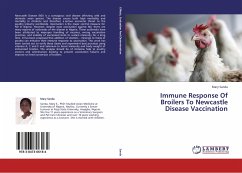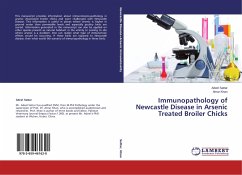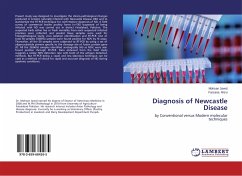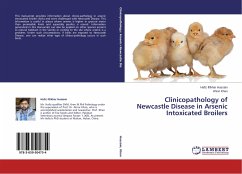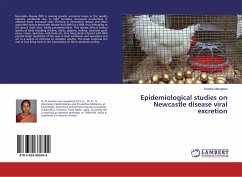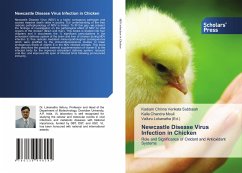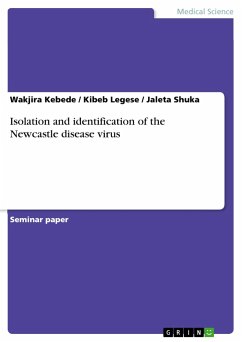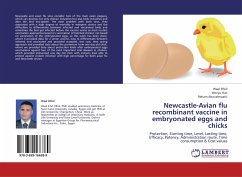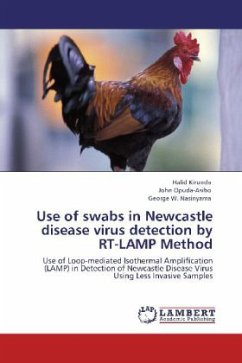
Use of swabs in Newcastle disease virus detection by RT-LAMP Method
Use of Loop-mediated Isothermal Amplification (LAMP) in Detection of Newcastle Disease Virus Using Less Invasive Samples
Versandkostenfrei!
Versandfertig in 6-10 Tagen
32,99 €
inkl. MwSt.

PAYBACK Punkte
16 °P sammeln!
Newcastle disease (ND) is the principal killer of rural poultry in Asian and African countries. In order to prevent further spread of ND virus in outbreak areas, faster methods of diagnosis are required. Haemagglutination inhibition test and ELISA are the most widely used methods. However, these tests are either labor-intensive, costly or require two samples, collected at least two weeks apart, to differentiate between antibodies due to vaccination or active infection. PCR, which can be used in earlier days of outbreak and with higher sensitivity and specificity requires at least 90 minutes of...
Newcastle disease (ND) is the principal killer of rural poultry in Asian and African countries. In order to prevent further spread of ND virus in outbreak areas, faster methods of diagnosis are required. Haemagglutination inhibition test and ELISA are the most widely used methods. However, these tests are either labor-intensive, costly or require two samples, collected at least two weeks apart, to differentiate between antibodies due to vaccination or active infection. PCR, which can be used in earlier days of outbreak and with higher sensitivity and specificity requires at least 90 minutes of reaction time. But LAMP, an assay with equally high sensitivity and specificity had been developed. While an earlier study had demonstrated that tissue samples could be used in detection of ND virus by RT-LAMP, slaughter of poultry for test samples is often resented by low-income farmers. In this book, we demonstrate that RT-LAMP can detect ND virus from less invasive samples (cloacal and oro-pharyngeal swabs) taken from outbreak cases. Amplification of most samples by the method can easily be achieved in less than 60 minutes reaction time and results are easily interpreted.



